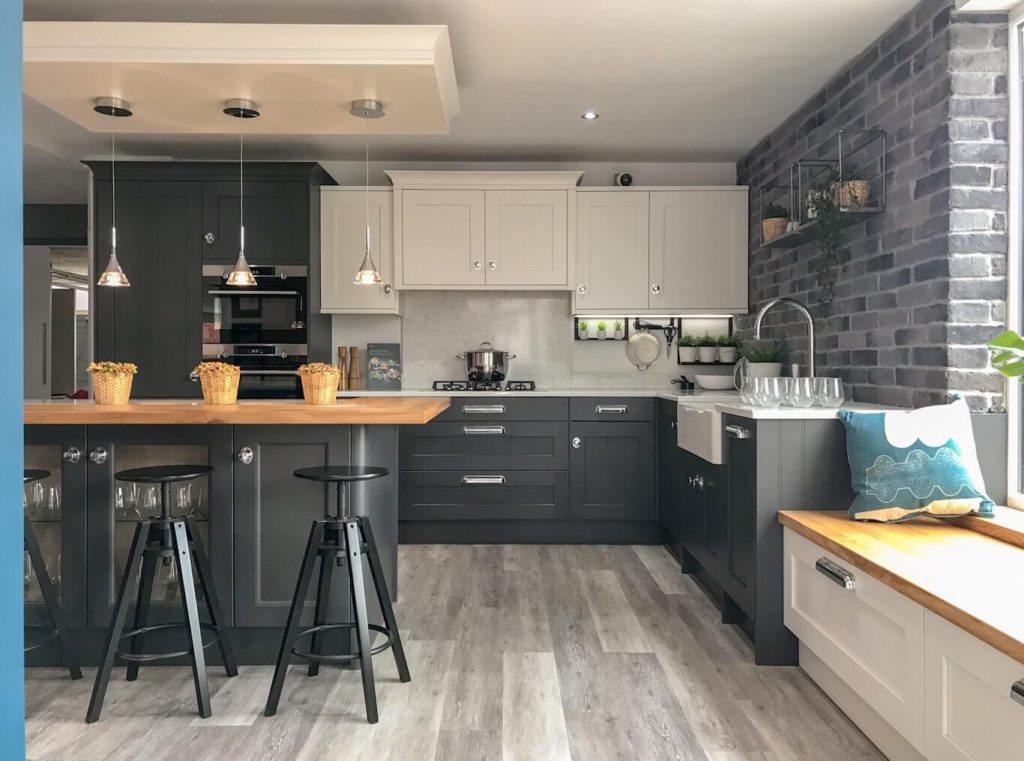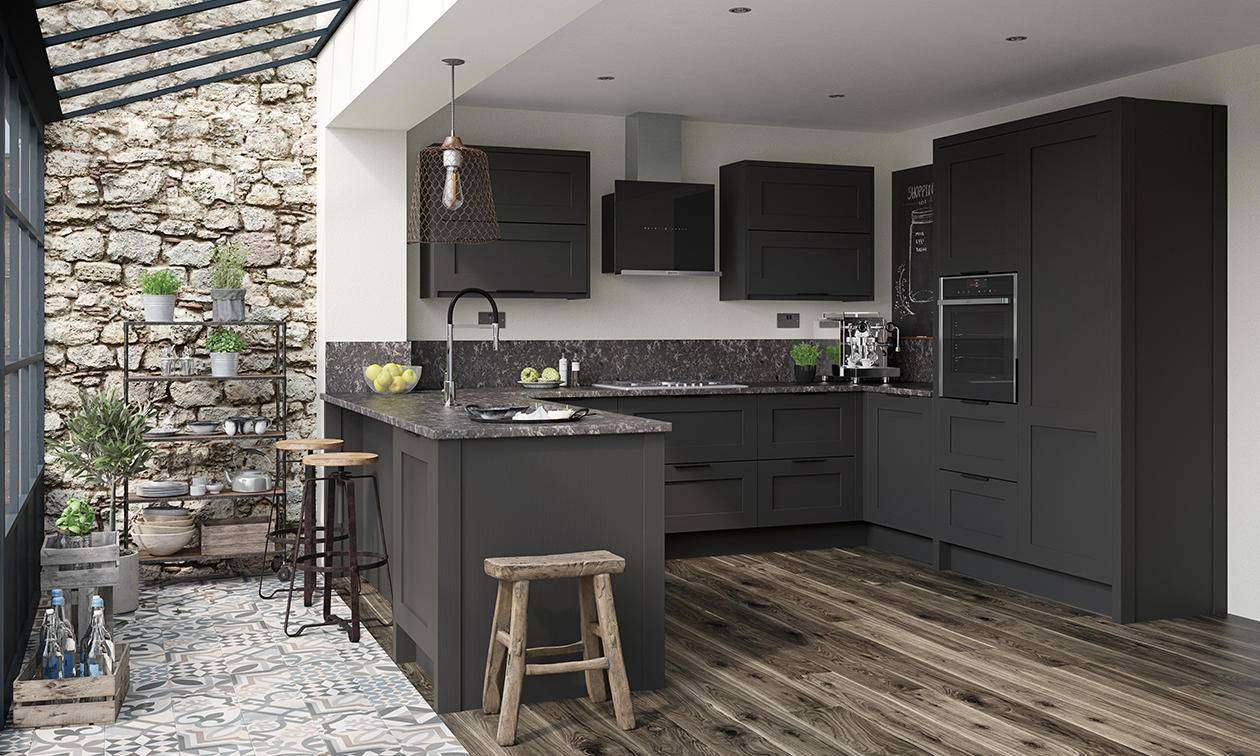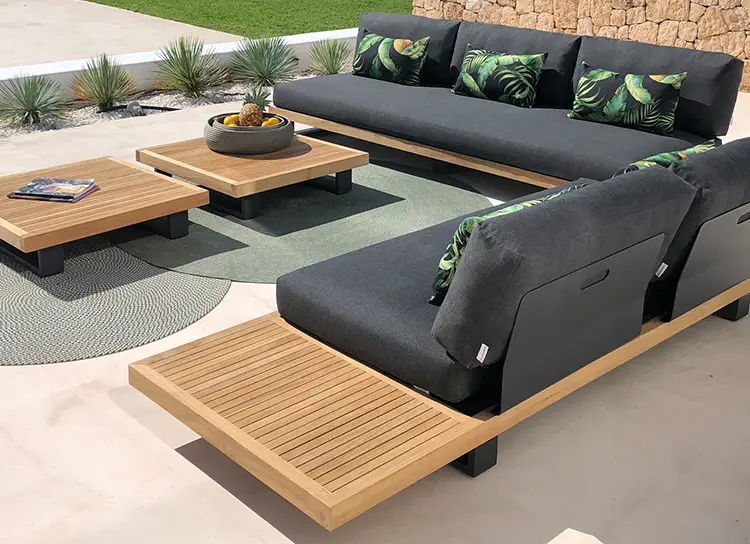Fitted kitchens offer a seamless blend of style and functionality (see Real Room Designs), maximizing space utilization and providing a tailored solution for homeowners. These custom-designed kitchens not only serve as inspirational spaces for cooking and entertaining but also stand up to daily wear and tear, making them a popular choice for modern homes.
Space-Saving Kitchen Designs
Space-saving kitchen designs are crucial for maximizing functionality in compact areas, particularly in fitted kitchens where every inch counts. One effective approach is implementing the “working triangle” theory, which optimizes the layout by positioning the sink, stove, and refrigerator in a triangular configuration for efficient workflow. This design principle enhances movement and accessibility, making meal preparation more streamlined.
Vertical space utilization is key in small kitchens. Floor-to-ceiling cabinets and wall shelves offer ample storage without encroaching on limited floor space. These tall units can accommodate pantry items, appliances, and cookware, keeping countertops clutter-free. For even more versatility, consider multi-functional furniture pieces that serve dual purposes, such as a kitchen island with built-in storage or a fold-down table for dining and food preparation.
Galley or pullman kitchen layouts are particularly effective in narrow spaces. These linear designs maximize efficiency by placing all cabinetry and appliances along two parallel walls, creating a compact yet functional cooking area. To further enhance space utilization, opt for streamlined kitchen cabinets with sleek, handle-less designs that contribute to a more open feel.
Investing in space-saving appliances is another smart strategy. Slimline dishwashers, compact refrigerators, and combination microwave-ovens can significantly reduce the footprint of essential kitchen equipment. Additionally, consider integrating appliances behind cabinet fronts to maintain a cohesive and uncluttered appearance.
To create the illusion of more space, use light colors and reflective surfaces. Glossy finishes on cabinets and backsplashes can bounce light around the room, making it feel larger and brighter. Clever use of lighting, such as under-cabinet LEDs or pendant lights, can also enhance the perception of space while providing task-specific illumination.
By incorporating these space-saving design elements, even the smallest fitted kitchens can be transformed into highly functional and visually appealing spaces that maximize both storage and workflow efficiency.
Seamless Integrated Appliances
Seamless integrated appliances are revolutionizing modern fitted kitchens, offering a sleek and cohesive aesthetic while maximizing functionality. These built-in devices blend seamlessly into cabinetry, creating a clean and uncluttered look that enhances the overall design of the space.
One of the primary advantages of integrated appliances is their ability to save valuable floor space, making them particularly beneficial for smaller kitchens. By incorporating refrigerators, dishwashers, and ovens into existing cabinetry, homeowners can achieve a streamlined workflow and more efficient use of available space.
The range of appliances that can be integrated is extensive, including:
- Refrigerators and freezers
- Dishwashers
- Ovens and microwaves
- Hobs
- Wine coolers
- Coffee machines
- Washing machines and dryers
Integrated hobs, for instance, fit seamlessly into worktops, maintaining clean lines and offering a sophisticated finish. This level of integration not only improves the kitchen’s aesthetics but also enhances its functionality by creating a more ergonomic cooking environment.
The seamless design of integrated appliances contributes to a more open and spacious feel in the kitchen. By hiding appliances behind cabinet fronts, the visual continuity of the cabinetry is maintained, creating an illusion of more space – a particularly valuable feature in compact kitchens.
However, it’s important to note that while integrated appliances offer numerous benefits, they also come with considerations. Installation can be more complex and potentially costlier than freestanding alternatives. Additionally, repairs or replacements may require more effort as the appliances are built into the cabinetry.
Despite these factors, the trend toward integrated appliances continues to grow, with many homeowners and designers recognizing their value in creating a cohesive and sophisticated kitchen environment. The seamless integration of appliances not only enhances the visual appeal of fitted kitchens but also contributes to a more efficient and enjoyable cooking and entertaining space.
Customizable Storage Solutions
Customizable storage solutions are essential components of fitted kitchens, offering tailored organization options that maximize space efficiency and enhance functionality. These bespoke storage systems can be designed to fit any kitchen layout, from compact galley kitchens to spacious open-plan designs, ensuring that every inch of available space is utilized effectively.
One of the key advantages of customizable storage is the ability to create purpose-built solutions for specific needs. For instance, pull-out pantry units can be installed to provide easy access to dry goods and spices, while custom-sized drawers can accommodate oversized cookware or small appliances. This level of personalization allows homeowners to optimize their kitchen storage based on their unique cooking habits and equipment preferences.
Innovative storage accessories play a crucial role in enhancing organization within cabinets and drawers. These may include:
- Adjustable shelving systems
- Pull-out corner units for hard-to-reach spaces
- Vertical dividers for baking trays and cutting boards
- Built-in spice racks
- Custom knife blocks and cutlery organizers
Floor-to-ceiling cabinetry is a popular choice for maximizing vertical space in fitted kitchens. These tall units can house integrated appliances, pantry items, and even create hidden workstations, effectively utilizing every available centimeter from floor to ceiling. This approach is particularly beneficial in smaller kitchens where floor space is at a premium.
For those who enjoy displaying their kitchenware, open shelving can be incorporated into the design. This not only provides easy access to frequently used items but also adds visual interest to the kitchen. Combining open shelves with closed cabinets offers a balance between display and concealed storage, catering to both aesthetic preferences and practical needs.
Customizable storage solutions also extend to specialized areas within the kitchen. For example, dedicated zones can be created for coffee stations, baking centers, or even a home bar, with storage designed specifically for the equipment and ingredients required for these activities.
Smart storage solutions are increasingly being integrated into modern fitted kitchens. These may include motion-sensor lighting in drawers and cabinets, electronic push-to-open mechanisms, and even app-controlled inventory systems for pantry management. These technological advancements not only enhance convenience but also contribute to a more efficient and organized kitchen environment.
By implementing these customizable storage solutions, fitted kitchens can achieve a perfect balance of form and function, ensuring that every item has its place and that the space works efficiently for the homeowner’s specific needs and lifestyle.
Compact Dining Solutions
Compact dining solutions are essential for maximizing space in fitted kitchens, especially when floor area is limited. These clever designs integrate seamlessly with the kitchen layout, providing functional eating areas without compromising on style or workflow.
One popular option is the drop-leaf table, which can be folded down when not in use to free up valuable space. For instance, a wall-mounted drop-leaf table offers flexibility for small kitchens, allowing for meals while taking up minimal space during cooking time. These tables can be positioned strategically, such as near windows, to create a pleasant dining experience while optimizing space usage.
Another space-saving solution is the use of multifunctional kitchen islands. A two-tiered kitchen island can serve as both a food preparation area and a dining space, effectively combining cooking and eating zones in one compact design. This approach is particularly useful in open-plan layouts where the kitchen flows into the living area.
For those with extremely limited space, consider utilizing narrow consoles or shelves as dining counters. These can be mounted on walls or positioned perpendicular to kitchen counters, providing a slim-profile dining option that doesn’t intrude on the kitchen’s workflow. Some innovative designs even incorporate pull-out countertops into kitchen cabinets, creating instant dining surfaces for one or two people when needed.
Seating choices play a crucial role in compact dining solutions. Folding chairs or stackable stools can be easily stored away when not in use, while benches with built-in storage offer both seating and additional space for kitchen items. For a more permanent solution, consider built-in seating along a wall or window sill, which can create a cozy dining nook without the need for freestanding furniture.
Pedestal tables are an excellent choice for small kitchens, as their single central support allows for more chairs to be tucked underneath, maximizing seating capacity without increasing the table’s footprint. This design is particularly beneficial for families with children who need to accommodate varying numbers of diners.
For those who enjoy entertaining but have limited space, extendable dining tables offer a versatile solution. These tables can be compact for daily use but expand to accommodate guests when needed. Options range from two-seater extendable tables to larger styles that can seat up to eight people, catering to various household sizes and entertaining needs.
Innovative designs like height-adjustable tables provide even more flexibility, allowing the surface to transition from coffee table height to dining table height as required. This adaptability ensures that the dining area can serve multiple purposes throughout the day, from casual breakfasts to more formal dinner settings.
By incorporating these compact dining solutions, fitted kitchens can efficiently accommodate dining needs without sacrificing precious space or compromising on functionality. These clever designs ensure that even the smallest kitchens can offer comfortable and stylish eating areas, enhancing the overall usability and enjoyment of the space.
Smart Appliance Integration
Smart appliance integration is revolutionizing fitted kitchens, offering homeowners unprecedented levels of convenience, efficiency, and control. These intelligent devices seamlessly connect to home networks, enabling remote monitoring and operation through smartphones or voice assistants.
One of the key advantages of smart appliances is their ability to optimize energy consumption. IoT-enabled kitchen appliances leverage sensors and machine learning algorithms to analyze usage patterns and adjust settings accordingly, significantly reducing energy waste and lowering utility costs. For example, smart refrigerators can automatically adjust cooling levels based on internal temperature and usage frequency, while smart ovens can preheat precisely when needed, minimizing unnecessary energy expenditure.
Connectivity options for smart kitchen appliances typically include Wi-Fi, Bluetooth, Zigbee, and Ethernet. When selecting smart appliances, homeowners should carefully evaluate the compatibility of these connectivity features with their existing home network infrastructure to ensure reliable and secure communication between the appliances and the central control system.
Voice control integration has become a standout feature in smart kitchens, with many appliances now compatible with virtual assistants like Alexa or Google Assistant. This hands-free control enables users to adjust settings, start cooking processes, or check on the status of appliances while multitasking,
enhancing the overall kitchen experience.
To achieve a truly integrated smart kitchen, implementing a centralized control system is crucial. This central hub, which can be a dedicated smart home controller or a compatible smartphone app, allows for seamless communication and coordination between all connected appliances. Such integration enables advanced features like remote monitoring, automated adjustments, and synchronized kitchen tasks.
Smart appliances also offer intelligent automation capabilities that can significantly streamline kitchen operations. For instance, a smart oven can automatically preheat when specific ingredients are detected in the refrigerator, or a dishwasher can be scheduled to run during off-peak energy hours. This level of automation not only saves time but also contributes to a more efficient and eco-friendly kitchen environment.
Customization and personalization are key benefits of smart kitchen appliances. These devices can learn and adapt to users’ preferences and cooking habits, offering personalized recommendations, recipe suggestions, and automated adjustments. This tailored experience enhances the overall functionality of the kitchen, making it more responsive to individual needs and preferences.
While smart appliance integration offers numerous benefits, it’s important to consider potential challenges such as initial setup complexity and the need for regular software updates. However, as technology continues to advance, these smart solutions are becoming increasingly user-friendly and seamlessly integrated into fitted kitchen designs, offering a glimpse into the future of home cooking and kitchen management.
Summary
Fitted kitchens provide a modern solution that maximizes style, functionality, and efficiency, tailored to the homeowner’s specific space and needs. From space-saving designs and seamless integrated appliances to customizable storage options, compact dining solutions, and smart appliance integration, these kitchens are highly adaptable and suited for diverse lifestyles. Whether managing a small space or seeking a streamlined cooking environment, fitted kitchens blend aesthetics with practicality, creating an organized and enjoyable setting for cooking, dining, and entertaining. As technology and design evolve, fitted kitchens continue to offer innovative, convenient, and energy-efficient solutions for the contemporary home.





